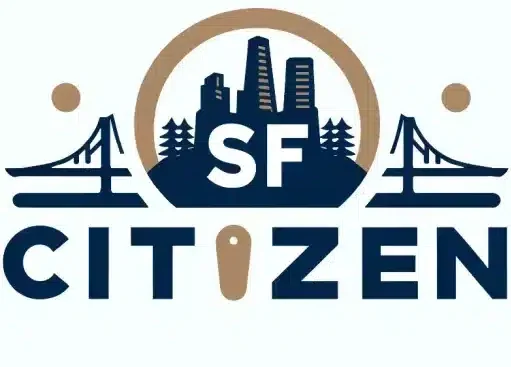Sacramento and San Francisco, two major cities in California, have experienced contrasting trends in safety and crime rates in recent years. While Sacramento has seen a surge in violence despite its “tough-on-crime” policies, San Francisco has witnessed a decline in crime rates amidst progressive reforms.
In This Article
Key Points
- Sacramento’s violence trends and safety evaluation corridors show a surge in crime, while San Francisco’s crime rates have fallen
- California’s AI regulations and their impact on urban safety are being closely monitored
- Traffic safety, community policing, and data-driven approaches play a crucial role in shaping public safety measures
Understanding Sacramento Safety and Crime Dynamics
Sacramento Safety Overview
Sacramento has been grappling with rising violence trends, despite the implementation of safety evaluation corridors and tough-on-crime policies. The city’s District Attorney, Anne Marie Schubert, has been a vocal advocate for stricter law enforcement measures, but the effectiveness of these policies in reducing crime has come under scrutiny.
In contrast, San Francisco, under the leadership of progressive prosecutors like George Gascon and Chesa Boudin, has seen a significant decrease in crime rates. This has raised questions about the efficacy of Sacramento’s approach to public safety and the need for a more balanced strategy that incorporates progressive reforms.
San Francisco Crime Rates and Urban Trends
San Francisco has experienced a notable decline in crime rates, despite the challenges posed by the COVID-19 pandemic and its impact on the city’s downtown area. The city’s progressive approach to criminal justice reform, which emphasizes rehabilitation and community-based solutions, has been credited with contributing to this positive trend.
However, San Francisco still faces challenges in addressing urban crime trends, particularly in its downtown core. The city has seen a rise in retail vacancies and reports of theft, prompting concerns about the long-term viability of its business districts.
AI Regulations and Their Impact on California’s Safety
AI Regulations in California
California has been at the forefront of developing AI safety regulations, recognizing the potential risks and benefits of this emerging technology. The state has proposed sweeping measures to ensure the responsible development and deployment of AI systems, with a focus on protecting public safety and privacy.
These regulations are expected to have significant implications for urban safety, as AI technologies are increasingly being used in areas such as surveillance, predictive policing, and traffic management. The intersection of AI and public safety measures is an area of active research and policy development.
Traffic Safety and Urban Planning
Traffic Safety Evaluation
Traffic safety evaluation methods play a crucial role in understanding and improving urban safety in Sacramento and San Francisco. The Federal Highway Administration has conducted extensive research on highway safety and access management strategies, providing valuable insights for urban planners and policymakers.
Innovations in transportation safety, such as intelligent traffic systems and data-driven approaches, are being explored as potential solutions to enhance urban safety. These efforts aim to reduce traffic accidents, improve pedestrian and cyclist safety, and create more livable and sustainable cities.
Law Enforcement and Public Safety Strategies
Progressive Reforms vs. Tough-on-Crime Policies
The debate between progressive reforms and tough-on-crime approaches has been at the forefront of public safety discussions in Sacramento and San Francisco. While Sacramento has emphasized strict law enforcement measures, San Francisco has adopted a more progressive approach, focusing on rehabilitation and community engagement.
Policy working groups, comprising law enforcement officials, community leaders, and experts, have been established to develop and implement effective public safety strategies. These groups aim to strike a balance between crime prevention and community well-being, taking into account the unique challenges faced by each city.
Community Policing and Crime Prevention
Community policing has emerged as a key strategy for enhancing public safety in Sacramento and San Francisco. By fostering strong relationships between law enforcement and the communities they serve, community policing aims to build trust, improve communication, and prevent crime.
Law enforcement agencies in both cities have been adapting their strategies to align with urban safety initiatives, emphasizing community engagement and data-driven approaches. The surge of violence in Sacramento has prompted a renewed focus on community policing as a means to address the root causes of crime and promote public safety.
Data-Driven Approaches to Safety
Data Collection and Analysis
Data collection methods play a vital role in understanding crime and safety trends in Sacramento and San Francisco. By analyzing data from various sources, including crime reports, traffic incidents, and community feedback, policymakers and law enforcement agencies can gain valuable insights into the factors contributing to urban safety challenges.
Data-driven approaches inform policy working groups and shape public safety strategies, allowing for evidence-based decision-making and targeted interventions. The success of safety regulations and initiatives can be evaluated using data, enabling continuous improvement and adaptation to changing circumstances.
Safety Evaluation and Health Care
Primary care patient safety is an essential component of overall urban safety. Innovations and regulations aimed at enhancing patient safety in Sacramento and San Francisco have the potential to improve health outcomes and reduce healthcare-related risks.
The relationship between healthcare safety and urban safety is complex, with factors such as access to care, social determinants of health, and community well-being all playing a role. Addressing healthcare disparities and ensuring equitable access to safe and quality care are critical steps in promoting urban safety and resilience.
FAQ
What are the current trends in Sacramento’s safety and violence?
Sacramento has been experiencing a surge in violence and crime rates, despite the implementation of tough-on-crime policies and safety evaluation corridors. The city’s District Attorney has been a vocal advocate for stricter law enforcement measures, but the effectiveness of these policies in reducing crime has been questioned.
How do San Francisco’s crime rates compare to those of Sacramento?
San Francisco has seen a notable decline in crime rates, in contrast to Sacramento’s rising violence trends. The city’s progressive approach to criminal justice reform, which emphasizes rehabilitation and community-based solutions, has been credited with contributing to this positive trend.
What impact have AI regulations in California had on urban safety?
California has been at the forefront of developing AI safety regulations, recognizing the potential risks and benefits of this emerging technology. These regulations are expected to have significant implications for urban safety, as AI technologies are increasingly being used in areas such as surveillance, predictive policing, and traffic management.
How does traffic safety evaluation contribute to overall urban safety?
Traffic safety evaluation methods play a crucial role in understanding and improving urban safety in Sacramento and San Francisco. Innovations in transportation safety, such as intelligent traffic systems and data-driven approaches, are being explored as potential solutions to enhance urban safety, reduce traffic accidents, and improve pedestrian and cyclist safety.
What strategies are being implemented to address the surge of violence in Sacramento?
Sacramento is focusing on community policing as a means to address the root causes of crime and promote public safety. Law enforcement agencies are adapting their strategies to align with urban safety initiatives, emphasizing community engagement and data-driven approaches. Policy working groups are also being established to develop and implement effective public safety strategies.

